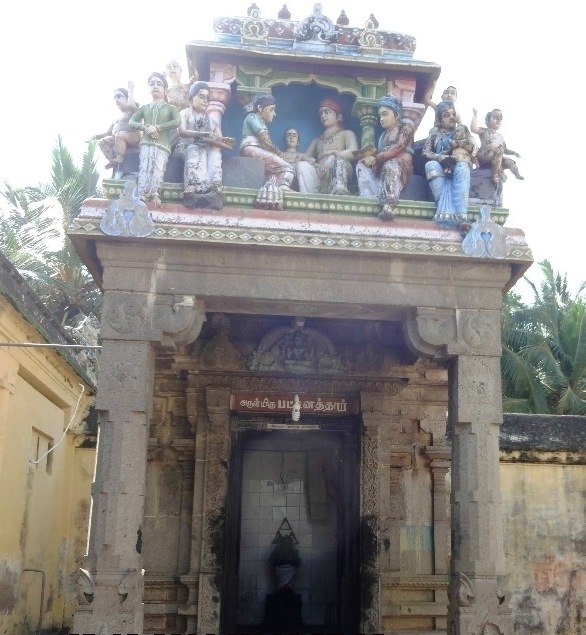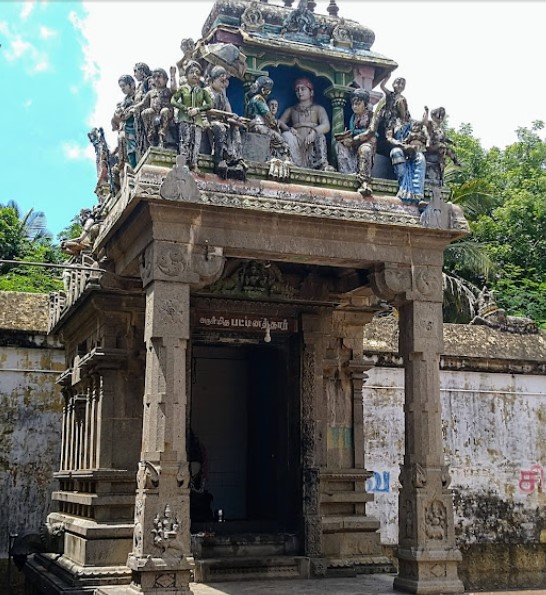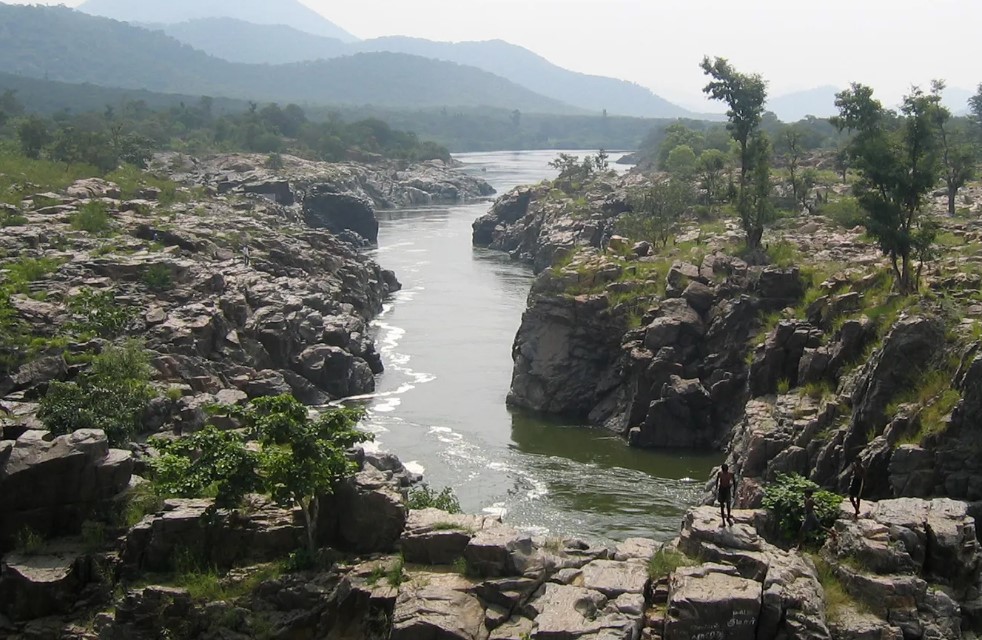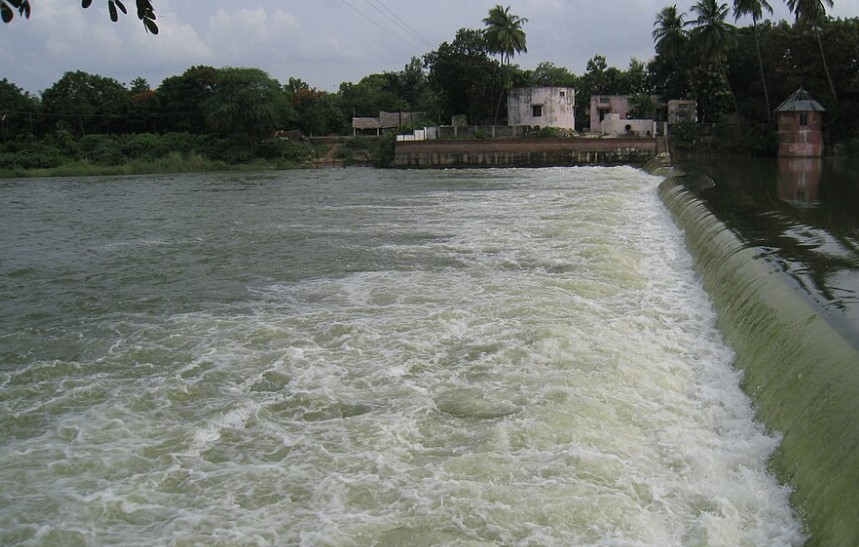- This is one of the 276 Devara Paadal Petra Shiva Sthalams and 10th Shiva Sthalam on the northern bank of the river Cauvery in Chozha Nadu (Vadakarai).
- Lord Shiva in this temple is a Swayambumurthi (self-manifested).
- Poompuhar is the place of confluence of the river Cauvery with the Bay of Bengal.
- Both Chayavanam and Pallavaneecharam temples are situated in Poompuhar.
- The last consecration ceremony (Maha Kumbabishekam) took place on 17.03.2008 and prior to that on 05.04.1995 and 20.08.1958.
CONSTRUCTION:
- The temple faces the Bay of Bengal. River Kaveri enters the sea very near to this temple, hence the place around it is called “Kaveri Puhum Pattinam”.
- This has later been changed to Kaveripoompattinam. It is also called Poompuhar. Another ancient name of this place was “Puhar Nagaram”.
- Puhar in Tamil means the estuary of the river.
- In the Chayavanam temple’s inscriptions dating to the period of Vikrama Cholan, this place is referred to as “Rajathiraja vallanattu Nangoor Nattu Kaveripoompattinam”. Kings like Sembiyan, Musukundan, Manuneethi Cholan and Karikala Cholan had used Poompuhar as their port capital and have added to its glory.
- It is believed that a Pallava king built this temple and worshipped Lord Shiva here.
- Hence this place also gets the name “Pallavaneecharam” and the lord is praised as “Sri Pallavaneswarar”.
- After the Chola period, a major part of the Poompuhar town was submerged in the Bay of Bengal.
- A few small villages still remain and bear silent witness to the cruelty of times. Chayavanam (Thiruchaikkadu), Pallavaneecharam, Melapperumpallam, Keelaperumpallam and Kezyayur are some of the important villages of the ancient city Poompuhar that still exist today.
PURANIC SIGNIFICANCE
Story of Pattinathar:
- The legend associated with this temple is that of Saint Pattinathar.
- It is believed that in this place, a devout couple by the name of Sivanesar and Gnanakalambikai, lived and worshipped Lord Shiva.
- Sivanesar was engaged in the marine trading business.
- They were blessed with a son and named him Thiruvenkadar (after Lord Shiva at Thiruvenkadu).
- Thiruvenkadar was also a staunch devotee of Lord Shiva. When he attained the marriageable age, he married a girl by the name of Sivakalai. However, they were not blessed with a child.
- They visited many Shiva temples including the one at Thiruvidaimaruthur.
- To bless them with a child, it is believed that Lord Mahalingaswamy of Thiruvidaimaruthur himself appeared as a newborn outside the house of a couple, Siva Sarumar Gurukkal and Suseelai.
- Lord Shiva appeared in their dream and advised them to give the child to Thiruvenkadar who in turn will give them enough wealth.
- On the advice of the lord, the couple handed over the child to Thiruvenkadar. Thiruvenkadar and his wife named the child as Marudavanar and raised him as their own son.
- At a very young age, Marudavanar started handling his family business.
- One day after returning from his business trip, he gave a box to his mother for safekeeping and then left the house. Anxious to see what wealth his son had brought home, Thiruvenkadar opened the box but to his dismay the box contained nothing but a dung cake mixed with husk.
- He threw the box on the ground in anger. Inside the dung cake, he found gold and gems.
- There was also a note that said – “Kathatra oosiyum vaaradu kaan kadai vazhikke” (Not even a broken needle will accompany the soul during the last journey).
- Thiruvenkadar then realised the truth and understood that this was Lord Shiva’s play and that he wanted him to give up his material wealth and enter into a spiritual life.
- Thiruvenkadar then renounced all his possessions and started visiting many Shiva temples.
- He also started composing and rendering hymns.
Pattinathar a reincarnation of Gubera:


- It is believed that Saint Pattinathar was given “Shiva Dheeksha” by Lord Shiva himself at Thiruvenkadu.
- Thiruvenkadar is popularly known as Pattinathar.
- There is a separate shrine here for Saint Pattinathar.
- He is believed to be the reincarnation of Kuberan and this temple is also known as “Pattinathar temple”. He became a reputed Tamil ascetic-poet.
- He is also praised as “Thavaraja Singam” and he rendered many songs about Lord Shiva and Goddess Parvathy.
- Later, he prayed to Lord Shiva to bless him with salvation.
- The lord appeared before him and gave him a sour sugarcane.
- He asked him to travel to various holy places with it.
- The lord further advised him that as soon as he tasted sweetness at the end of the sugarcane, he would attain salvation.
- It is believed that Pattinathar attained salvation at Thiruvotriyur and his Jeeva Samadhi (a shrine) was built near the Thiruvotriyur temple.


